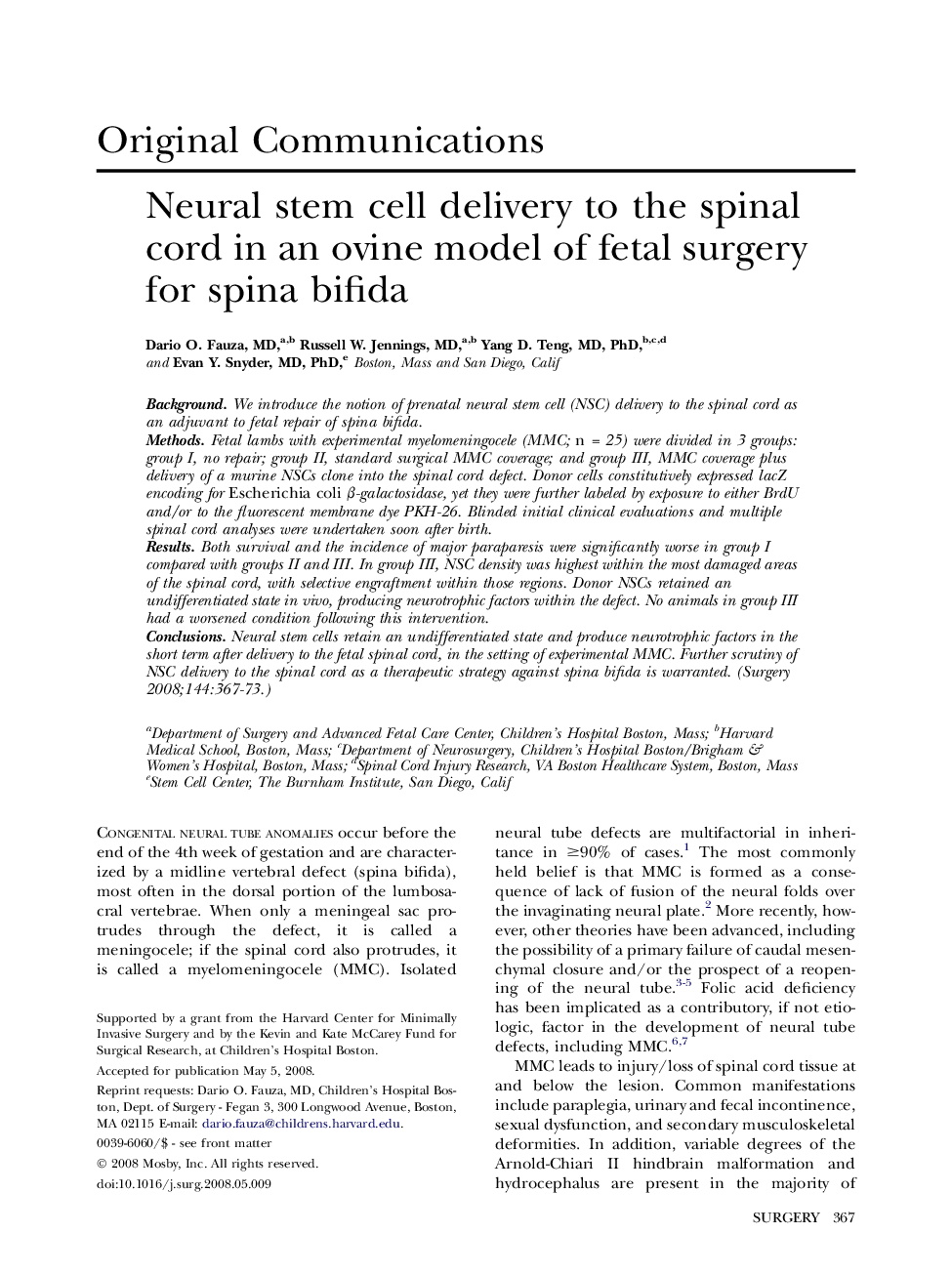| Article ID | Journal | Published Year | Pages | File Type |
|---|---|---|---|---|
| 4308252 | Surgery | 2008 | 7 Pages |
BackgroundWe introduce the notion of prenatal neural stem cell (NSC) delivery to the spinal cord as an adjuvant to fetal repair of spina bifida.MethodsFetal lambs with experimental myelomeningocele (MMC; n = 25) were divided in 3 groups: group I, no repair; group II, standard surgical MMC coverage; and group III, MMC coverage plus delivery of a murine NSCs clone into the spinal cord defect. Donor cells constitutively expressed lacZ encoding for Escherichia coli β-galactosidase, yet they were further labeled by exposure to either BrdU and/or to the fluorescent membrane dye PKH-26. Blinded initial clinical evaluations and multiple spinal cord analyses were undertaken soon after birth.ResultsBoth survival and the incidence of major paraparesis were significantly worse in group I compared with groups II and III. In group III, NSC density was highest within the most damaged areas of the spinal cord, with selective engraftment within those regions. Donor NSCs retained an undifferentiated state in vivo, producing neurotrophic factors within the defect. No animals in group III had a worsened condition following this intervention.ConclusionsNeural stem cells retain an undifferentiated state and produce neurotrophic factors in the short term after delivery to the fetal spinal cord, in the setting of experimental MMC. Further scrutiny of NSC delivery to the spinal cord as a therapeutic strategy against spina bifida is warranted.
